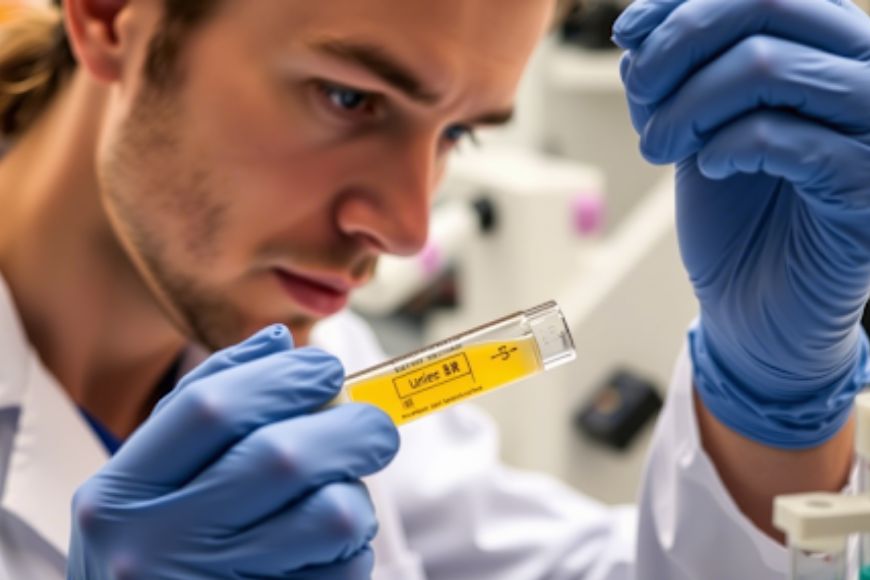Introduction
Urinary tract infections (UTIs) continue to present one of the most stubborn clinical challenges in modern medicine. While antibiotics remain the standard of care, persistent and recurrent infections, particularly in patients treated in high-volume centers like UTI Treatment St. John, often resist traditional therapies. The culprit? Biofilms—complex microbial communities that adhere to the bladder wall, evading immune responses and antimicrobial interventions.
This article explores the emerging field of bladder wall biofilm deconstruction—a targeted therapeutic strategy aimed at disrupting these microbial fortresses. By focusing on the unique biofilm behaviors within the urinary tract, especially as observed in urban healthcare environments such as UTI Treatment St. John, researchers and clinicians are developing novel interventions that go beyond conventional antibiotics.
Understanding Bladder Wall Biofilms
Biofilms are dense aggregations of bacteria encased in an extracellular polymeric substance (EPS) matrix. Within the bladder, uropathogenic bacteria—most notably Escherichia coli (UPEC)—can form biofilms on the mucosal surface, catheter surfaces, or even intracellularly.
Key Features of Bladder Biofilms:
- Increased resistance to antibiotics and host immunity
- Dormant persister cells that survive treatment
- Complex architecture involving channels and subpopulations
- EPS matrix made of proteins, DNA, and polysaccharides
In the context of UTI Treatment St. John, biofilms are especially problematic in catheter-associated urinary tract infections (CAUTIs), immunocompromised patients, and cases of chronic cystitis. Standard antibiotics often fail because they target planktonic (free-floating) bacteria, not the structured communities that define biofilms.
Limitations of Conventional UTI Treatments
While most uncomplicated UTIs respond to short courses of antibiotics, recurring cases treated at UTI Treatment St. John have illuminated several shortcomings in the current therapeutic paradigm:
- Incomplete eradication of bacteria due to biofilm protection
- High relapse rates, particularly in women and catheter users
- Rising antibiotic resistance linked to overuse
- Invasive interventions like bladder irrigation or catheter replacement
- Side effects from prolonged systemic antibiotic exposure
This has led to a push toward therapies that can physically or chemically deconstruct the biofilm matrix, allowing for more effective bacterial clearance.
What Is Biofilm Deconstruction?
Biofilm deconstruction refers to the disruption or breakdown of the structural and biochemical integrity of a biofilm. The objective is to disaggregate the bacterial community, degrade the protective matrix, and expose bacteria to antibiotics or immune defenses.
Approaches to deconstruction can be:
- Mechanical (e.g., high-pressure flushing or ultrasound)
- Chemical (e.g., enzymatic agents, surfactants)
- Biological (e.g., bacteriophages, antimicrobial peptides)
- Nanotechnological (e.g., nanoparticle-mediated disruption)
At UTI Treatment St. John, cutting-edge techniques incorporating these modalities are currently being investigated and, in some pilot programs, implemented.
Enzymatic Disruption in UTI Treatment St. John
One of the most promising strategies for biofilm deconstruction is enzymatic degradation. Enzymes target specific components of the EPS matrix, making bacteria more vulnerable to antibiotics and immune responses.
Commonly Used Enzymes:
- DNase I – degrades extracellular DNA
- Dispersin B – breaks down polysaccharides
- Proteinase K – digests structural proteins
- Alginate lyase – specific to Pseudomonas biofilms
In a recent clinical initiative at UTI Treatment St. John, intravesical instillation of a DNase-antibiotic combination showed improved clearance in patients with recurrent biofilm-positive UTIs. These treatments work by weakening the biofilm, allowing antibiotics to penetrate and kill previously shielded bacteria.
Nanotechnology and Biofilm Penetration
Nanocarriers are also playing an increasing role in biofilm-targeted therapies. These microscopic drug delivery systems can be engineered to penetrate the biofilm matrix, release payloads in response to microenvironmental cues, and avoid rapid clearance from the urinary tract.
Notable Innovations:
- Chitosan-coated nanoparticles with mucoadhesive properties
- pH-responsive liposomes that release antibiotics in acidic environments
- Silver or zinc oxide nanoparticles with intrinsic antimicrobial activity
At UTI Treatment St. John, clinical trials are assessing nanoparticle-antibiotic conjugates for their ability to penetrate bladder wall biofilms and sustain antimicrobial activity over time. The findings are promising, with significant reductions in bacterial counts and symptomatic relief in previously refractory cases.
Antimicrobial Peptides (AMPs)
AMPs are naturally occurring or synthetic peptides that possess broad-spectrum antimicrobial properties. Unlike traditional antibiotics, they often work by disrupting bacterial membranes, making them potent agents against biofilm-embedded bacteria.
Benefits of AMPs in UTI Management:
- Broad-spectrum activity
- Rapid action
- Resistance-suppressive mechanisms
- Compatibility with other therapies
Researchers at UTI Treatment St. John are currently evaluating the intravesical use of AMPs in combination with enzyme-based biofilm disruptors. Initial reports suggest synergistic effects that significantly reduce bacterial viability in resistant strains of UPEC and Klebsiella.
Bacteriophage Therapy
Phage therapy—using viruses that specifically infect bacteria—has reemerged as a compelling strategy in biofilm deconstruction. Phages can produce enzymes like depolymerases that degrade the biofilm matrix, facilitating deeper penetration and bacterial lysis.
Unique Advantages:
- Species-specific targeting
- Minimal disruption of native microbiota
- Auto-dosing effect (replication at the infection site)
A pilot program at UTI Treatment St. John is exploring the safety and efficacy of phage cocktails delivered directly to the bladder. Early outcomes indicate that phages can significantly reduce bacterial loads even in multidrug-resistant cases.
Low-Energy Ultrasound and Mechanical Deconstruction
Ultrasound has been explored as a non-invasive method to enhance the efficacy of other treatments by physically disrupting biofilms. When combined with nanoparticles or antibiotics, low-frequency ultrasound may improve drug penetration and biofilm collapse.
UTI Treatment St. John is participating in a multi-center clinical trial assessing the combined use of:
- Ultrasound + antibiotic-coated catheters
- Ultrasound + liposomal drug carriers
Such combination therapies may offer outpatient solutions for patients who are poor candidates for systemic antibiotic therapy or invasive procedures.
Clinical Implications and Patient Outcomes
Deconstructing bladder wall biofilms has several implications for patient care at facilities like UTI Treatment St. John:
- Reduced recurrence: Fewer relapses due to complete eradication
- Shorter treatment cycles: More effective early interventions
- Lower resistance development: Through synergistic therapies
- Improved quality of life: Especially in chronic UTI sufferers
- Cost savings: Less reliance on repeat diagnostics, hospitalizations
Patients previously labeled as “non-responders” are now benefiting from personalized, biofilm-focused interventions, marking a shift toward precision urology.
Barriers to Implementation
Despite promising results, widespread adoption of biofilm deconstruction strategies faces obstacles:
- Regulatory approval for novel agents and devices
- Cost of advanced therapeutics and delivery systems
- Specialized training required for urologists and nurses
- Patient adherence to multi-step outpatient protocols
Ongoing education, policy support, and translational research are vital to ensure the full integration of these therapies into UTI Treatment St. John and similar healthcare environments.
The Future of UTI Treatment in St. John
The integration of bladder wall biofilm deconstruction into the therapeutic framework of UTI Treatment St. John represents a paradigm shift in urinary tract infection care. Future innovations may include:
- Genetically engineered phages
- Smart-release nanomedicines
- 3D imaging-guided catheter systems
- AI-based treatment personalization
As biofilm biology becomes better understood, the treatment of UTIs will move from broad-spectrum empiricism to targeted precision medicine.
Conclusion
Biofilm deconstruction is emerging as a cornerstone of effective UTI management, particularly in urban and complex care settings like UTI Treatment St. John. By directly targeting the structural and biological defenses of bladder wall biofilms, these new therapies offer hope for patients burdened by recurrent, antibiotic-resistant UTIs.
From enzymatic cocktails and nanoparticles to bacteriophages and ultrasound-guided delivery, the therapeutic arsenal is expanding rapidly. With continued research, interdisciplinary collaboration, and clinical application, the future of UTI Treatment St. John may soon achieve what traditional antibiotics alone could not: sustained bacterial eradication, patient recovery, and prevention of recurrence.
FAQs
1. Why are bladder wall biofilms so difficult to treat in UTI patients?
Bladder wall biofilms protect bacteria from antibiotics and immune defenses by forming a dense extracellular matrix. This matrix limits drug penetration and allows dormant bacteria to survive and cause recurrent infections—especially common in cases managed at UTI Treatment St. John.
2. Are biofilm-targeting treatments currently available in St. John?
Yes. Research facilities and clinics offering UTI Treatment St. John are beginning to implement enzyme-based instillations, nanoparticle-antibiotic combinations, and experimental phage therapy under clinical trial conditions. These options may be available for patients with recurrent or resistant UTIs.
3. Can biofilm deconstruction prevent future UTIs?
Yes. By effectively breaking down the biofilm and eliminating persister cells, these treatments reduce the likelihood of bacterial survival and recurrence. Many patients undergoing biofilm-based UTI Treatment St. John therapies report longer symptom-free intervals and improved bladder health.



